In a world where consumer choices are vast and varied, the realm of private label kitchen appliances has quietly emerged as a significant force in the market. These products, often associated with affordability and quality, are reshaping the way we perceive and purchase kitchenware. As the landscape of retail evolves, the packaging of these private label appliances plays a pivotal role in their success, influencing everything from customer perception to brand image. This article delves into the intricacies of private label kitchen appliance packaging, exploring its design elements, sustainability, branding impact, customer perceptions, innovations, and the future of this dynamic sector.
The Rise of Private Label Kitchen Appliances: A Game-Changer in Home Cooking
The kitchen, once a realm dominated by well-known brand names, has seen a seismic shift with the rise of private label kitchen appliances. These unbranded, store-specific products have quietly become a game-changer in the world of home cooking. Offering affordability, quality, and a plethora of options, private label appliances have captured the attention of budget-conscious consumers and culinary enthusiasts alike.
With the economic downturn and the increasing demand for value-for-money products, private label kitchen appliances have stepped into the spotlight. They’ve managed to carve out a niche that’s both unique and highly competitive. The reasons for this surge in popularity are multifaceted, encompassing everything from cost savings to product innovation.
Firstly, the price point is a major draw. Private label appliances are often significantly cheaper than their branded counterparts. This affordability makes them accessible to a wider audience, including those who may not have the budget to invest in high-end brands. For many, this means being able to outfit their kitchens with the latest technology without breaking the bank.
Secondly, the quality of private label appliances has significantly improved over the years. Manufacturers have stepped up their game, ensuring that these products are not just budget-friendly but also durable and reliable. The result is a kitchen appliance that performs as well as, if not better than, many branded models, without the premium price tag.
Moreover, the variety offered by private label brands is impressive. From countertop blenders to high-end ranges, there’s a vast array of options to suit every kitchen need and preference. This diversity has allowed consumers to find appliances that not only fit their budgets but also their specific cooking styles and kitchen layouts.
The design of private label kitchen appliances has also evolved to be more appealing. While once seen as utilitarian and less visually appealing than branded models, private label products now boast sleek, modern designs that can rival those of well-known brands. The packaging plays a crucial role in this perception, often showcasing the appliance’s design and features prominently.
In terms of packaging, private label kitchen appliances have made significant strides. The packaging design is not just about protecting the product during shipping; it’s a marketing tool that can make or break a consumer’s first impression. These days, private label packaging is often as sophisticated as that of branded appliances, featuring high-quality materials, attractive graphics, and informative product details.
Sustainability has also become a key factor in the packaging of private label kitchen appliances. With growing environmental concerns, manufacturers are increasingly using eco-friendly materials and minimizing packaging waste. This shift not only appeals to environmentally conscious consumers but also aligns with the brand’s image of offering responsible and ethical products.
Branding, though absent in the traditional sense, is still a vital aspect of private label kitchen appliances. The packaging design, the choice of materials, and the overall presentation all contribute to the brand identity of the store or retailer. This branding helps to establish trust and recognition, making private label appliances a familiar and reliable choice for shoppers.
The impact of private label kitchen appliances on the market is undeniable. They’ve forced established brands to innovate and compete on price, quality, and design. This healthy competition has benefited consumers, who now have more choices than ever before.
In the realm of home cooking, private label kitchen appliances have become a staple. They’ve proven that great performance and affordability don’t have to be mutually exclusive. As the market continues to evolve, it’s clear that private label appliances are here to stay, reshaping the landscape of home cooking one kitchen at a time.
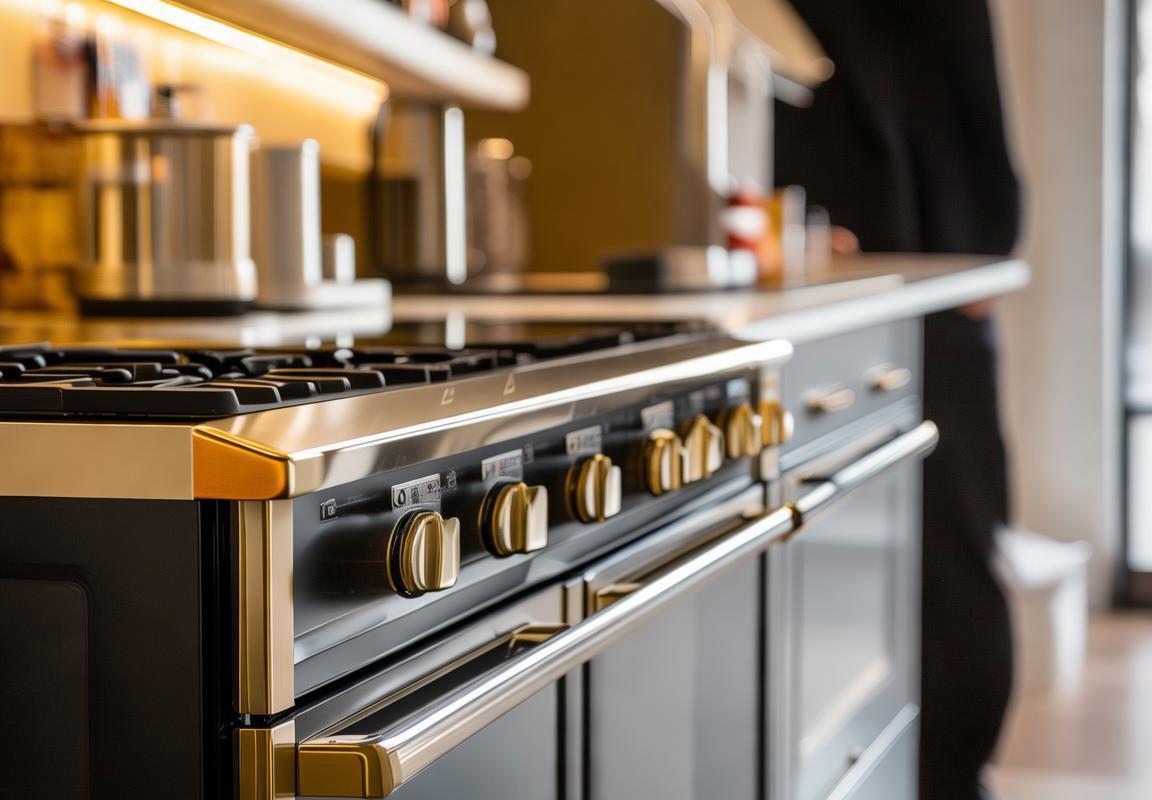
Understanding Private Label Kitchen Appliance Packaging: What It Is and Why It Matters
Private label kitchen appliance packaging refers to the custom packaging designed specifically for appliances sold under a retailer’s own brand. This type of packaging has gained significant traction in recent years, and it’s not hard to see why. Let’s delve into what it entails and the reasons why it matters so much in the modern retail landscape.
The packaging of private label kitchen appliances often reflects the retailer’s brand identity, showcasing their unique style and values. It typically includes the retailer’s logo, color scheme, and messaging, creating a cohesive look that resonates with consumers who are looking for a specific brand experience.
One of the key benefits of private label packaging is its cost-effectiveness. By producing packaging in bulk, retailers can reduce costs compared to custom packaging for individual brands. This cost savings can be passed on to consumers, making private label appliances more affordable without compromising on quality.
Functionality is another critical aspect of private label kitchen appliance packaging. It’s designed to protect the product during transportation and storage, ensuring that the appliance arrives in perfect condition. Features like durable materials, secure closures, and protective inserts are common, reflecting the retailer’s commitment to customer satisfaction.
In an era where sustainability is a growing concern, private label packaging often emphasizes eco-friendly practices. Recyclable materials, minimal waste, and eco-conscious design are becoming standard, appealing to environmentally conscious consumers who prefer to support brands that share their values.
The design of private label packaging is not just about aesthetics; it’s also about conveying information. Clear, concise labeling helps consumers make informed purchasing decisions. It includes vital details such as specifications, usage instructions, and safety warnings, all presented in an easy-to-read format.
Branding plays a significant role in the success of private label kitchen appliances. A well-designed package can differentiate the product from competitors, making it stand out on the shelves. By incorporating innovative design elements, retailers can create a packaging that not only protects the appliance but also becomes a talking point among consumers.
Private label packaging also serves as a marketing tool. It provides an opportunity for retailers to tell their story and connect with customers on a personal level. Through compelling visuals and messaging, retailers can build brand loyalty and create a sense of exclusivity around their private label products.
In terms of customization, private label packaging offers a level of flexibility that branded packaging may not. Retailers can tailor the packaging to fit their specific needs, whether it’s adjusting the size, shape, or color to match their brand identity or incorporating additional features that enhance the user experience.
Consumer perception is a vital aspect of private label packaging. A positive impression of the packaging can influence the perception of the appliance itself. High-quality, well-designed packaging can make a private label product feel premium, which can be a significant factor in the consumer’s decision-making process.
Moreover, private label packaging can adapt to changing market trends. Retailers can quickly update their packaging to reflect new design trends or seasonal themes, ensuring that their products remain relevant and appealing to consumers.
As the retail landscape continues to evolve, private label packaging must keep pace with technological advancements. The integration of augmented reality (AR) or QR codes allows consumers to interact with the packaging in innovative ways, providing additional information or enhancing the shopping experience.
In conclusion, private label kitchen appliance packaging is a multifaceted component of the retail experience. It serves as a protective barrier, a marketing tool, and a reflection of the retailer’s brand. Its ability to balance cost-effectiveness with functionality, sustainability, and brand identity makes it a crucial element in the world of private label appliances.

Design Elements That Make Private Label Packaging Stand Out
Private label kitchen appliance packaging has evolved significantly over the years, becoming a crucial aspect of the consumer’s shopping experience. The design of this packaging is not just about protecting the product; it’s about creating a memorable and appealing visual narrative that resonates with customers. Here are some key design elements that set private label packaging apart:
The use of high-quality materials is paramount in private label kitchen appliance packaging. Durable, eco-friendly options like recycled cardboard and biodegradable plastics are not only sustainable but also convey a sense of quality to the consumer. The texture and weight of the packaging can signal to shoppers that the appliance inside is robust and well-made.
Color plays a vital role in capturing attention and conveying the essence of the brand. Private label packaging often uses a strategic color palette that is both eye-catching and reflects the nature of the appliance. For instance, blue and white might be used for a sleek blender, while vibrant red could emphasize the power of a blender with a high-performance motor.
Effective branding is embedded within the design of private label packaging. Logos and brand names are prominently displayed, ensuring that customers recognize and remember the product. The typography used is also a key design element; it should be clear, modern, and reflective of the brand’s identity. Subtle logo animations or embossing can add a touch of sophistication without overwhelming the design.
Functional elements are cleverly integrated into the packaging design. For example, a fold-out instruction manual or a pop-up feature that provides a sneak peek of the appliance can engage the consumer and make the packaging a part of the shopping experience. This interactivity can create a sense of curiosity and encourage the customer to consider the product further.
Embossing, foil stamping, and other decorative techniques can elevate the look of private label packaging. These methods add a luxurious feel to the product, making it appear more premium than its price tag might suggest. The use of metallic foil, especially on the brand logo or key product features, can draw the eye and reinforce the brand’s image.
The layout of the packaging is meticulously designed to communicate the most important information to the consumer. Product dimensions, features, and benefits are prominently placed, ensuring that the customer can quickly understand what the appliance offers. The design may also include a section that highlights any certifications or endorsements, such as energy efficiency ratings, to further enhance credibility.
Privacy and security are addressed through packaging design as well. For example, the use of clear, shatter-resistant plastic windows allows customers to inspect the appliance without damaging the packaging. This transparency not only builds trust but also allows the product’s unique features to shine through.
The packaging design often reflects the brand’s personality. Whether the brand is quirky and playful or professional and minimalist, the design elements should align with these attributes. The use of images or graphics that are in line with the brand’s values can evoke an emotional connection with the consumer, making the product more memorable.
Lastly, sustainability is a growing concern for many consumers. Private label packaging that includes information about its eco-friendly aspects, such as biodegradable materials or carbon-neutral shipping, can resonate with environmentally conscious shoppers. This messaging is often integrated seamlessly into the design, ensuring that it is both informative and visually appealing.
In summary, private label kitchen appliance packaging stands out through a combination of high-quality materials, strategic color use, effective branding, functional features, decorative techniques, clear layout, transparency, brand alignment, and sustainability messaging. These elements work together to create a package that not only protects the product but also communicates its value and appeals to the consumer’s senses and values.
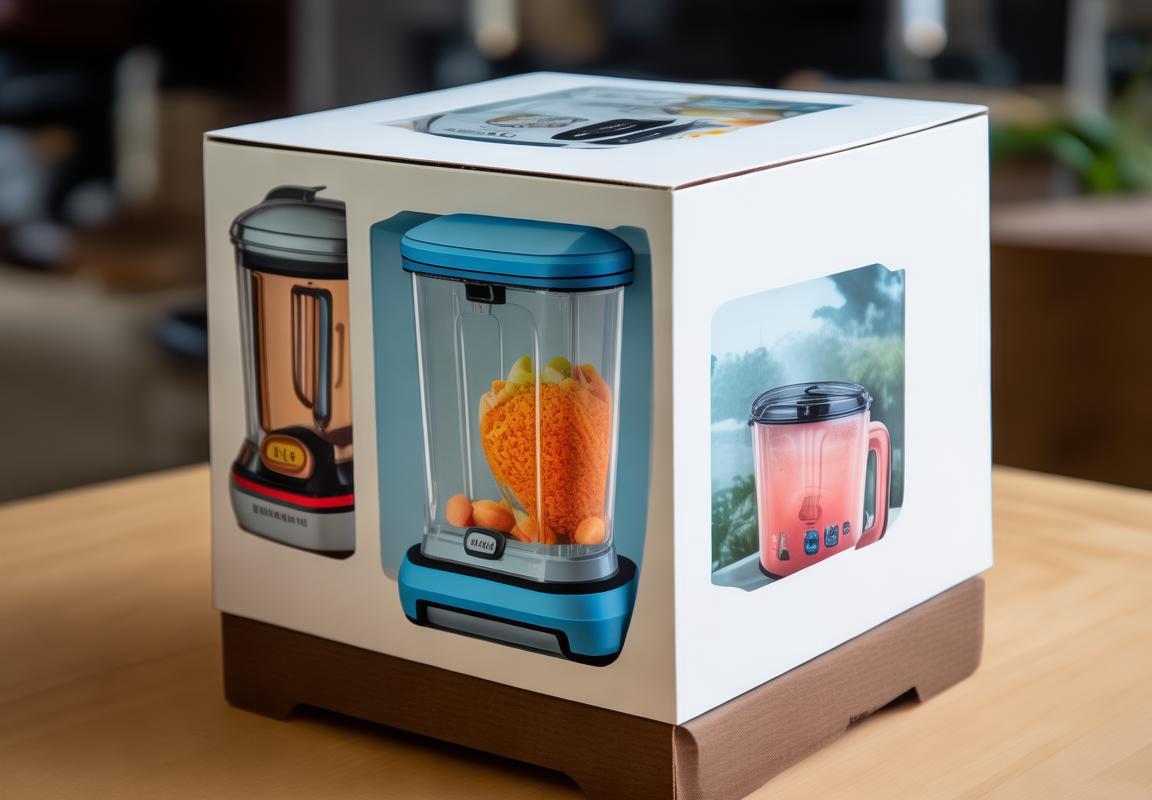
Functionality Meets Aesthetics: The Role of Packaging in Kitchen Appliances
In the realm of kitchen appliances, packaging goes beyond mere protection; it’s a canvas where functionality and aesthetics dance together in harmony. The role of packaging in this dynamic duo is pivotal, shaping not just the first impression but the overall user experience. Here’s a closer look at how packaging brings these two elements together.
Packaging as a Window to FunctionalityThe packaging of a kitchen appliance often reveals its core functionality. Think of a sleek blender with a clear, plastic casing that showcases its powerful motor and sharp blades. This transparency allows potential buyers to visualize the appliance’s capabilities without even opening the box. Similarly, the layout of buttons and controls on the packaging can hint at the ease of use and advanced features that the appliance offers.
Aesthetic Appeal: The First Point of ContactThe visual appeal of packaging is a crucial factor in attracting consumers. A well-designed box can evoke emotions and create a sense of anticipation. Bold colors, high-quality images, and innovative shapes can make a kitchen appliance stand out on the shelf. For instance, a futuristic-looking coffee maker with a minimalist design and vibrant packaging can immediately catch the eye of a design-conscious consumer.
The Material MatterThe choice of materials in packaging can significantly impact both the appliance’s and the consumer’s perception. Biodegradable or recycled materials send a strong message about the brand’s commitment to sustainability. Meanwhile, durable and sturdy materials reassure buyers of the appliance’s quality and longevity. The texture of the packaging, from the smooth feel of a glossy finish to the tactile roughness of a natural fiber, can also add to the sensory experience.
Clarity in CommunicationPackaging serves as a communication bridge between the manufacturer and the consumer. Clear and concise information about the appliance’s specifications, features, and usage instructions is essential. A well-crafted label can guide the user through the appliance’s benefits, from energy efficiency to ease of cleaning. By integrating this information into the packaging design, manufacturers can ensure that customers are well-informed from the moment they pick up the product.
The Ergonomic FactorPackaging isn’t just about what it contains; it’s also about how it’s handled. Ergonomic design in packaging can make the appliance easier to carry, open, and store. A simple twist or a push-lid mechanism can transform an otherwise mundane unpacking experience into a seamless one. This thoughtfulness can enhance the consumer’s overall satisfaction with the purchase.
Branding and Emotional ConnectionPackaging plays a significant role in branding, establishing a visual identity that resonates with the target audience. By incorporating brand colors, logos, and typography, packaging can create an emotional connection with the consumer. A consistent brand image across all packaging can reinforce the brand’s values and position the appliance as a premium choice in the market.
The Packaging as a Showcase for InnovationInnovation in packaging can highlight the cutting-edge technology of a kitchen appliance. From interactive displays that provide tutorials to packaging that doubles as a stand or storage solution, innovative packaging can turn a mundane product into a conversation starter. It showcases the brand’s forward-thinking approach and can set it apart from competitors.
The Lifespan of PackagingThe role of packaging doesn’t end once the appliance is purchased. It continues to serve as a storage solution, a display piece, and even a conversation topic. The durability and adaptability of the packaging can influence how long a consumer keeps the appliance in their home and how often they use it.
In conclusion, packaging in kitchen appliances is more than just a protective shell; it’s a multifaceted tool that merges functionality with aesthetics. It communicates the appliance’s features, reinforces the brand’s image, and enhances the consumer’s experience from the moment they lay eyes on the product to the moment they decide to purchase it. The intricate balance between form and function in packaging is what ultimately makes a kitchen appliance not just a tool but a cherished part of the home.
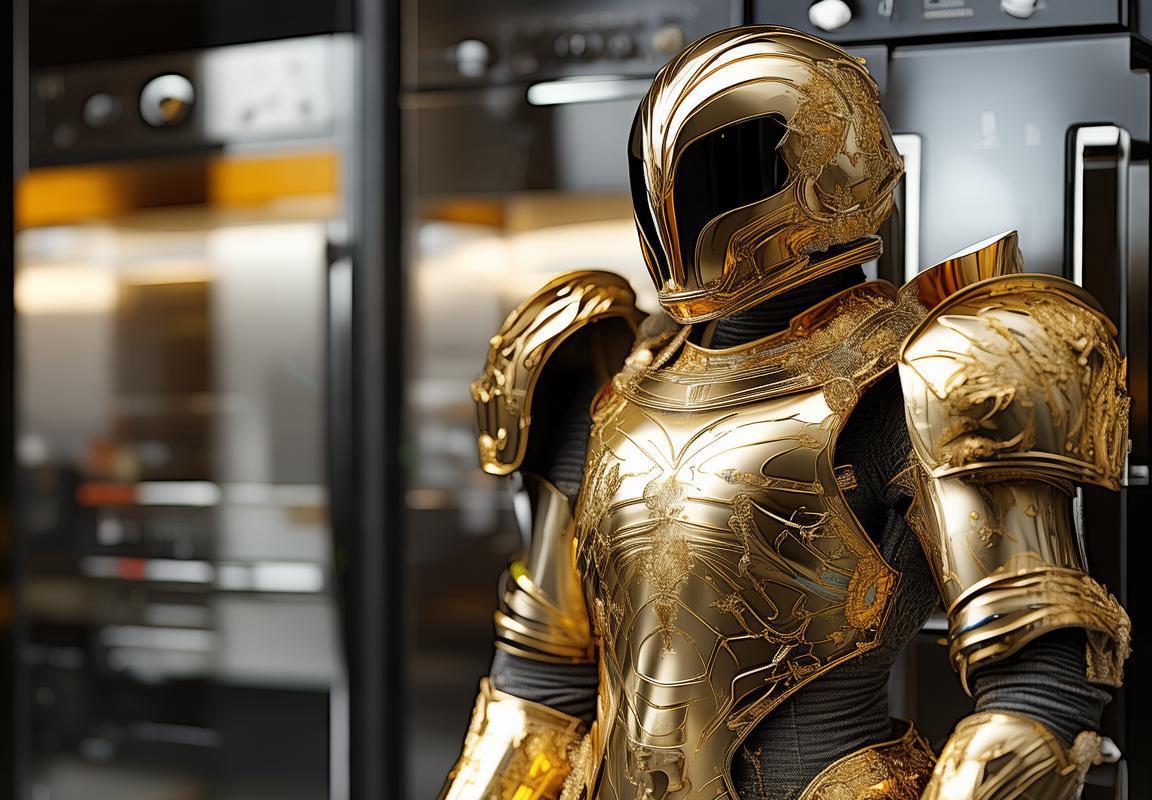
Sustainability and Eco-Friendly Practices in Private Label Appliance Packaging
In today’s conscious consumer market, sustainability has become a cornerstone for many businesses. Private label kitchen appliance packaging is no exception, with brands increasingly focusing on eco-friendly practices. Here’s a closer look at how sustainability is woven into the fabric of private label appliance packaging.
The shift towards sustainability starts with the choice of materials. Many private label brands are opting for recyclable and biodegradable materials that reduce the environmental footprint. Cardboard, which is a staple in packaging, is now often sourced from sustainably managed forests. This not only supports responsible forestry practices but also ensures that the packaging can be recycled after use.
Another key aspect is the use of water-based inks over traditional solvent-based inks. Water-based inks are less harmful to the environment, as they release fewer volatile organic compounds (VOCs) during the printing process. This switch not only improves air quality but also aligns with the growing demand for greener production methods.
Designing for minimal waste is also a priority. Private label packaging is now being designed with a focus on reducing excess materials. This includes using just the right amount of material to protect the appliance during shipping without over-packaging. Compact and efficient designs not only save resources but also make it easier for consumers to dispose of the packaging responsibly.
The integration of recycled content into packaging materials is on the rise. Private label brands are increasingly incorporating post-consumer recycled (PCR) content into their packaging. Using PCR materials reduces the demand for new resources, conserves energy, and decreases greenhouse gas emissions associated with raw material extraction.
Furthermore, the use of renewable energy in packaging production is gaining traction. Some manufacturers are investing in renewable energy sources like solar or wind power to power their production lines. This reduces the carbon footprint of the packaging process and aligns with the broader commitment to sustainability.
Eco-friendly labeling is also becoming more common. Brands are using labels to inform consumers about the sustainable practices they’ve employed. Certifications like the Forest Stewardship Council (FSC) or the Programme for the Endorsement of Forest Certification (PEFC) provide assurance that the packaging materials come from responsibly managed forests.
The design of private label appliance packaging is also being revisited to facilitate recycling. By making the packaging easier to recycle, brands are not only reducing waste but also encouraging responsible disposal. This might involve using materials that can be easily separated into different recyclable components or designing packaging that can be flattened for more efficient recycling processes.
Packaging is also being used as a tool for education. Some brands are incorporating messaging about sustainability and recycling into their packaging design. By doing so, they aim to raise awareness and encourage consumers to adopt greener practices in their daily lives.
As the demand for sustainable products grows, so does the pressure on manufacturers to innovate. This has led to the development of new, sustainable materials that can replace traditional plastics. Bioplastics made from renewable sources like cornstarch or sugarcane are becoming more prevalent in private label appliance packaging, offering a more environmentally friendly alternative.
Moreover, the lifespan of the packaging is being considered. Brands are designing packaging that not only protects the product but also extends its use beyond the product itself. This might mean creating packaging that can be repurposed or upcycled into something useful after the appliance is no longer in use.
In conclusion, sustainability in private label appliance packaging is about more than just choosing eco-friendly materials; it’s a holistic approach that touches every aspect of the packaging process. From the choice of materials and production methods to the design and disposal, private label brands are striving to create packaging that is both functional and kind to the planet. As consumer awareness and demand for sustainable products continue to rise, it’s clear that these efforts are not only beneficial for the environment but also for the reputation and long-term success of these brands.
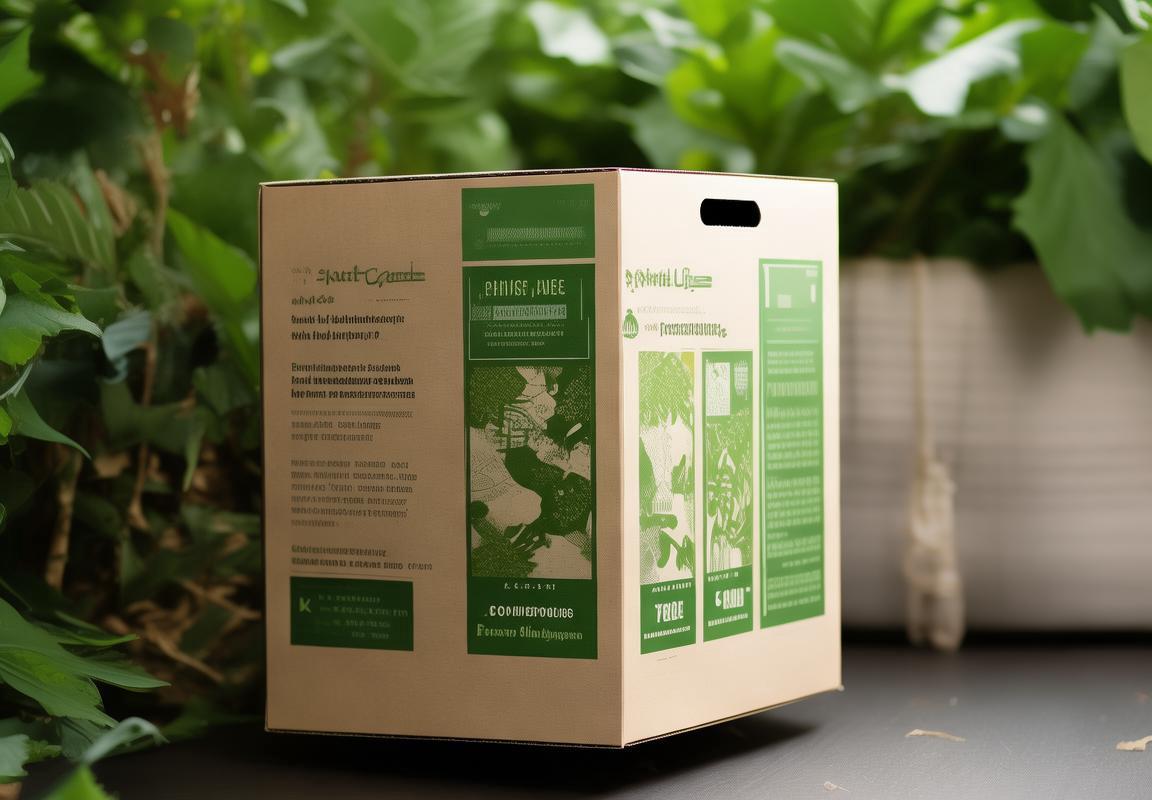
The Impact of Branding on Private Label Kitchen Appliances
Private label kitchen appliances have gained significant traction in recent years, offering consumers an alternative to traditional branded products. The impact of branding on these private label items is multifaceted, influencing everything from consumer perception to product appeal. Here’s a closer look at how branding shapes private label kitchen appliances:
Branding plays a crucial role in establishing trust with consumers. When customers see a recognizable logo or brand name, it immediately triggers a sense of familiarity and reliability. Private label brands often leverage this by using similar branding strategies to established names, ensuring that consumers feel confident in their purchase. This trust is further solidified through consistent branding across all product lines, from kitchen appliances to everyday household items.
The design of packaging is another area where branding makes a significant impact. Private label brands invest in packaging that not only protects the product but also communicates the brand’s identity. Sleek, modern designs can evoke a sense of quality, while vibrant colors and bold fonts can make the product stand out on the shelves. This attention to detail in packaging helps to create a positive brand image, making private label appliances more appealing to consumers who may be seeking a value-for-money option.
Brand messaging is also a powerful tool in the branding of private label kitchen appliances. Private label brands often use messaging that emphasizes affordability, innovation, and the brand’s commitment to quality. For instance, phrases like “Quality at a fraction of the cost” or “Innovative design for your home” resonate with consumers looking for value without compromising on performance. This messaging helps to differentiate private label products from generic or no-name alternatives, positioning them as a smarter choice for budget-conscious shoppers.
The association of branding with specific lifestyles or values can greatly influence consumer perception. Private label brands may use imagery and language that appeal to a particular demographic, such as eco-conscious consumers or those interested in minimalist design. For example, a private label brand might use imagery of natural landscapes or eco-friendly materials on their packaging to convey a sense of environmental responsibility. This targeted branding not only attracts like-minded consumers but also reinforces the brand’s identity and strengthens its position in the market.
One of the most notable impacts of branding on private label kitchen appliances is the emotional connection it fosters. Brands that tell a compelling story or create a narrative around their products can evoke an emotional response from consumers. This emotional bond can be a deciding factor in a customer’s choice between private label and branded appliances. A brand that tells the story of craftsmanship, heritage, or community support may resonate more deeply with consumers than one that simply focuses on price or features.
Collaborations with designers and influencers can also elevate the branding of private label kitchen appliances. By partnering with well-known figures or brands that have a strong following, private label companies can tap into the existing brand loyalty and reach a broader audience. This type of endorsement can lend credibility to the private label brand and enhance its appeal, often at a lower cost compared to traditional marketing efforts.
Moreover, branding influences the way products are presented and showcased in retail settings. Private label brands often work closely with retailers to ensure their products are displayed in a way that aligns with their brand identity. This includes everything from shelf arrangements to promotional displays, ensuring that the brand message is consistent and memorable.
In conclusion, the impact of branding on private label kitchen appliances is substantial. From establishing trust and trustworthiness to creating emotional connections and differentiating from competitors, branding is a cornerstone of success for private label brands. By focusing on these aspects, private label brands can not only compete with established names but also carve out a unique niche in the market, appealing to a diverse range of consumers.
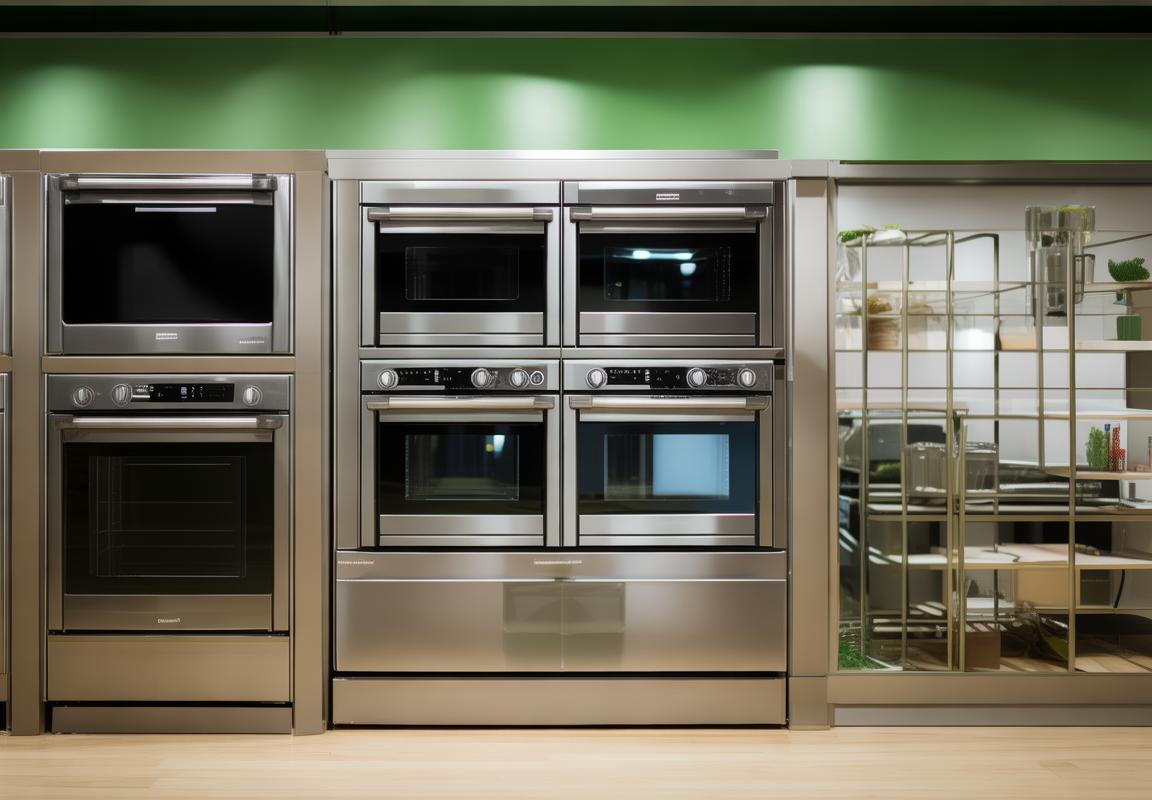
Customer Perceptions and the Importance of Packaging in Purchase Decisions
In the world of retail, packaging is more than just a container—it’s a silent salesman that can make or break a customer’s impression. For private label kitchen appliances, the packaging plays a crucial role in shaping customer perceptions and influencing their purchase decisions. Here’s how:
The Visual Appeal of Packaging
Packaging is the first point of contact for consumers, and its visual appeal can be a powerful draw. The colors, fonts, and images used can evoke emotions and convey the brand’s identity. A sleek, modern design can communicate quality and innovation, while a more traditional look might suggest durability and reliability. The right visuals can instantly connect with the consumer’s subconscious, setting the stage for the perceived value of the product.
Clarity and Information
Packaging serves as a source of information for customers, providing essential details about the product. Clear, concise, and easy-to-read text ensures that consumers can quickly understand the features, benefits, and specifications of the appliance. The inclusion of user-friendly diagrams, instructions, or even QR codes leading to instructional videos enhances the user experience. When customers feel informed, they are more likely to trust the product and consider it a worthwhile purchase.
Trust and Safety
In the realm of kitchen appliances, safety and trust are paramount. Packaging that communicates safety features, certifications, and compliance with standards can significantly influence a consumer’s decision. Features like childproof locks, safety warnings, and warranty information help build trust. Consumers are more likely to choose a product that has reassured them of its safety, especially when it comes to items that come into contact with food and water.
Branding and Recognition
Branding is not just about the name on the package; it’s about creating a consistent and recognizable identity. Private label brands that invest in strong branding can establish a presence in the market that resonates with customers. Logos, taglines, and brand colors that are consistently applied across various packaging can create a sense of familiarity and reliability. This branding can be a deciding factor when consumers are comparing private label options with their more established competitors.
Emotional Connection
Packaging can evoke an emotional response that goes beyond the functional aspects of the appliance. The choice of materials, textures, and finishes can provide a tactile experience that enhances the perceived value. For example, a package that feels sturdy and well-crafted can suggest that the appliance itself is of high quality. Emotional branding can make a product more memorable and desirable, influencing purchase decisions long after the initial interaction.
Convenience and Sustainability
Packaging that prioritizes convenience can also sway consumer choices. Features like easy-to-open designs, modular packaging that allows for flat-packaging for shipping, or eco-friendly materials can appeal to consumers who are looking for products that align with their values. Convenience and sustainability are increasingly important factors in purchase decisions, and packaging that reflects these considerations can be a significant selling point.
Inclusivity and Accessibility
In today’s diverse market, packaging that caters to different needs and preferences can be a game-changer. This includes clear language for non-native speakers, Braille for visually impaired consumers, or packaging that is suitable for individuals with disabilities. When packaging is inclusive, it signals to consumers that the brand is considerate and respectful of a wide range of users, which can foster a positive brand image and encourage purchases.
Price Perception
The presentation of the product in its packaging can also influence how consumers perceive the price. A premium-looking package can make a budget-friendly appliance feel more expensive, which can be beneficial for the brand. Conversely, if the packaging is perceived as low-quality or generic, it might reflect negatively on the price and perceived value of the product.
Ultimately, the packaging of private label kitchen appliances is a multifaceted tool that can greatly impact customer perceptions and purchase decisions. It’s about creating a cohesive and compelling story that begins with the packaging and extends to the customer’s experience with the appliance itself. A well-thought-out packaging strategy can set a private label brand apart in a crowded marketplace, making it a standout choice among consumers.
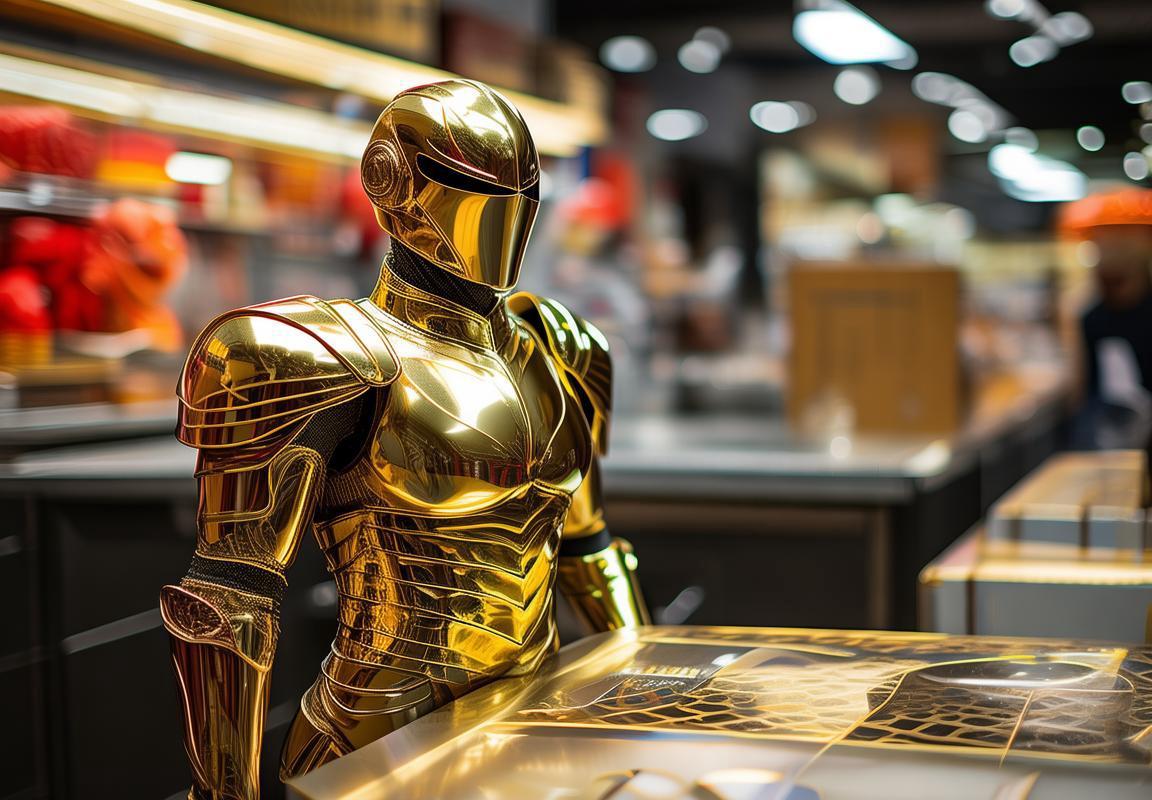
Innovations in Private Label Kitchen Appliance Packaging
Private label kitchen appliance packaging has been undergoing a transformative phase with innovations that not only enhance the visual appeal but also elevate the overall customer experience. Here’s a closer look at some of the latest innovations reshaping the landscape of packaging for private label kitchen appliances.
The integration of smart technology has become a cornerstone in packaging design. From QR codes that provide instant access to product specifications and usage tips to interactive elements that allow consumers to test virtual demonstrations of the appliance’s features, this fusion of packaging with technology is revolutionizing how customers engage with their products.
Eco-conscious consumers are at the forefront of packaging trends, and private label brands are responding with sustainable materials. Recycled paper, biodegradable plastics, and compostable films are becoming more common, reducing the environmental footprint while still maintaining the structural integrity and durability expected in packaging.
Packaging design is now more than just a barrier; it’s a canvas for storytelling. Brands are using packaging to convey their values and heritage, creating a narrative that resonates with customers. This storytelling approach can range from minimalist designs that evoke a sense of simplicity and luxury to bold graphics that communicate a brand’s commitment to innovation and quality.
The modular packaging approach is gaining traction, allowing for custom configurations that can accommodate a variety of products within the same packaging system. This flexibility not only streamlines the supply chain but also provides a unique and cohesive look for the brand, reinforcing its identity across different product lines.
Customization is no longer just for high-end brands; it’s becoming a staple in private label packaging. By offering customers the ability to choose their appliance color, finish, or even add personalized engraving to the packaging, brands are creating a more personal and memorable shopping experience.
Packaging that serves as a functional tool is becoming increasingly popular. Features like integrated measurement guides, fold-out recipe cards, or built-in storage for accessories are not only convenient but also enhance the usability of the appliance. These added touches can make the difference between a product that’s merely functional and one that becomes an integral part of the customer’s daily routine.
The use of augmented reality (AR) in packaging is an exciting new development. By scanning the package with a smartphone, customers can visualize the appliance in their own kitchen, see it in different sizes, or even interact with it to learn more about its features. This immersive experience can significantly influence purchase decisions by providing a more tangible connection to the product.
Brands are also focusing on the unboxing experience, recognizing that it’s a critical moment in the customer journey. Packaging that is visually striking, with a satisfying tactile feel, can create a sense of anticipation and delight. From the use of premium materials to innovative seal designs that offer a satisfying “pop,” the unboxing experience is being elevated to a new level.
The trend towards minimalism in packaging design is also influencing private label brands. Clean lines, minimal color palettes, and less text are all part of a strategy to make packaging feel premium and sophisticated, without overwhelming the consumer with information.
Innovations in packaging are also addressing the challenges of global distribution. Packaging that is designed to withstand harsh shipping conditions, such as extreme temperatures or rough handling, is becoming more common. This not only ensures the product arrives in perfect condition but also reduces the cost and environmental impact of shipping.
Lastly, there’s a growing emphasis on transparency in packaging. Brands are providing detailed information about the materials used, the manufacturing process, and the product’s lifecycle, giving consumers the confidence to make sustainable choices. This transparency can also be a powerful tool for building trust and loyalty among customers.
As the landscape of private label kitchen appliance packaging continues to evolve, these innovations are setting new standards for what consumers expect from their purchases. By combining functionality, aesthetics, sustainability, and technology, packaging is not just a protective shell—it’s a gateway to a brand’s story and a key influencer in the purchase decision-making process.
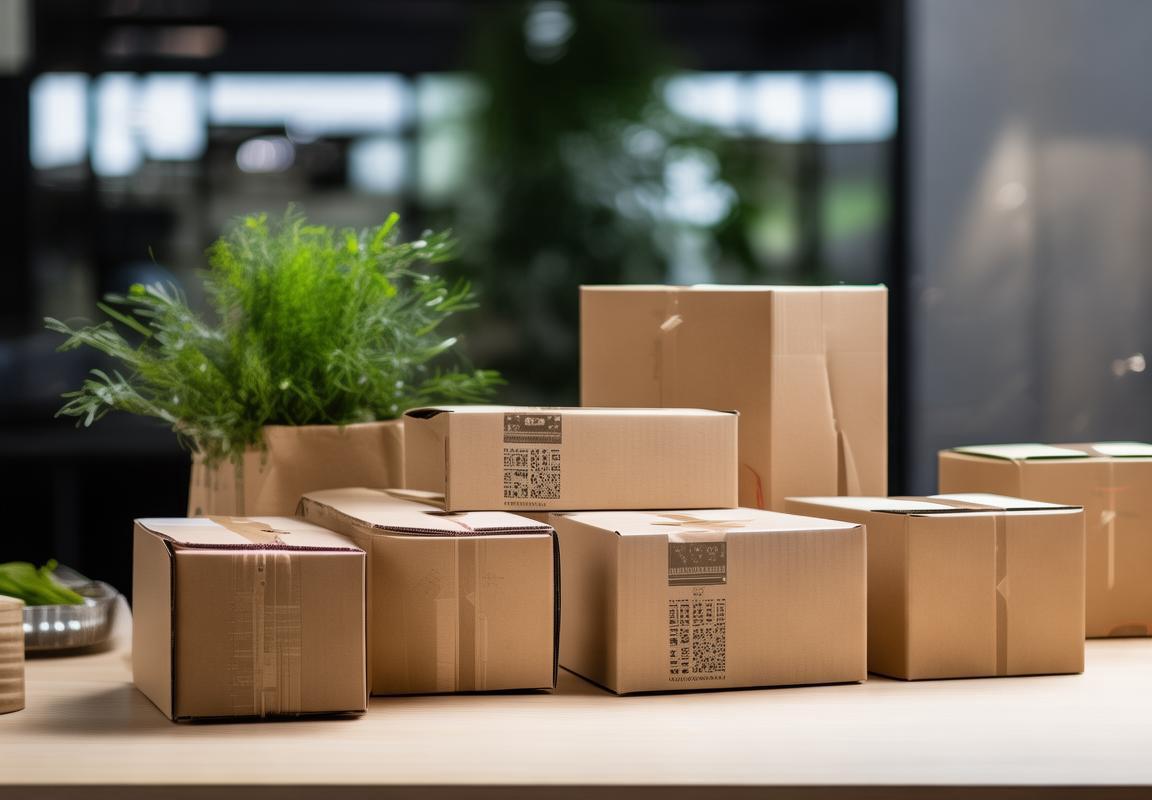
Comparing Private Label to Branded Packaging: Pros and Cons
In the competitive world of kitchen appliances, private label packaging has emerged as a key differentiator for brands looking to stand out. While branded packaging often boasts high-end designs and recognizable logos, private label options offer a unique blend of affordability and innovation. Let’s delve into the pros and cons of private label packaging compared to its branded counterpart.
Private label packaging often leverages minimalist designs to convey a sense of simplicity and reliability. This approach can be more cost-effective, allowing manufacturers to allocate resources to the quality of the appliance itself. Conversely, branded packaging tends to be more elaborate, with intricate designs and bold branding that can drive up production costs.
One of the primary advantages of private label packaging is its price point. By focusing on cost-effective materials and streamlined designs, private label brands can offer consumers a more affordable option without compromising on functionality. This can be particularly appealing to budget-conscious shoppers looking for quality appliances without the premium price tag.
Branded packaging, on the other hand, often comes with a higher price tag due to the premium materials and attention to detail. This can create a perception of luxury and quality, which may be a selling point for consumers who are willing to pay more for a brand name they trust.
Private label packaging often emphasizes functionality, with clear and concise instructions that are easy to follow. This can be beneficial for first-time buyers or those who may not be as familiar with the appliance’s features. Branded packaging, while also informative, may sometimes be overshadowed by the visual appeal of the design, potentially leading to a less user-friendly experience.
Branding plays a significant role in shaping consumer perceptions. Private label packaging, while cost-effective, may sometimes struggle to establish a strong brand identity. This can be a challenge when trying to compete with established brands that have already built a loyal customer base. In contrast, branded packaging often has a clear and consistent brand image that resonates with consumers.
In terms of sustainability, private label packaging can be a more eco-friendly choice. Many private label brands are increasingly adopting green practices, such as using recycled materials and minimizing waste. This can be a significant advantage for environmentally conscious consumers. Branded packaging, while also making strides in sustainability, may still have a larger carbon footprint due to the complexity of their supply chains and production processes.
Private label packaging can sometimes face challenges when it comes to shelf appeal. While minimalist designs can be effective, they may not always capture the attention of shoppers in a crowded marketplace. Branded packaging, with its bold colors and eye-catching designs, can stand out on the shelf and draw in customers.
Another consideration is the longevity of the packaging. Private label packaging, designed for cost-effectiveness, may not be as durable as branded packaging, which is often engineered to withstand the rigors of shipping and retail display. This can lead to potential issues with product protection and presentation.
When it comes to innovation, private label packaging may not always be at the forefront. Branded packaging often invests in cutting-edge design and technology to create a unique and memorable unboxing experience. This can be a key differentiator for consumers who value the latest trends and technological advancements.
In conclusion, the choice between private label and branded packaging in kitchen appliances comes down to a variety of factors. Private label packaging offers affordability, functionality, and a growing focus on sustainability, but may lack the brand recognition and innovation that branded packaging provides. Consumers must weigh these pros and cons based on their personal preferences, budget, and values when making a purchase decision.
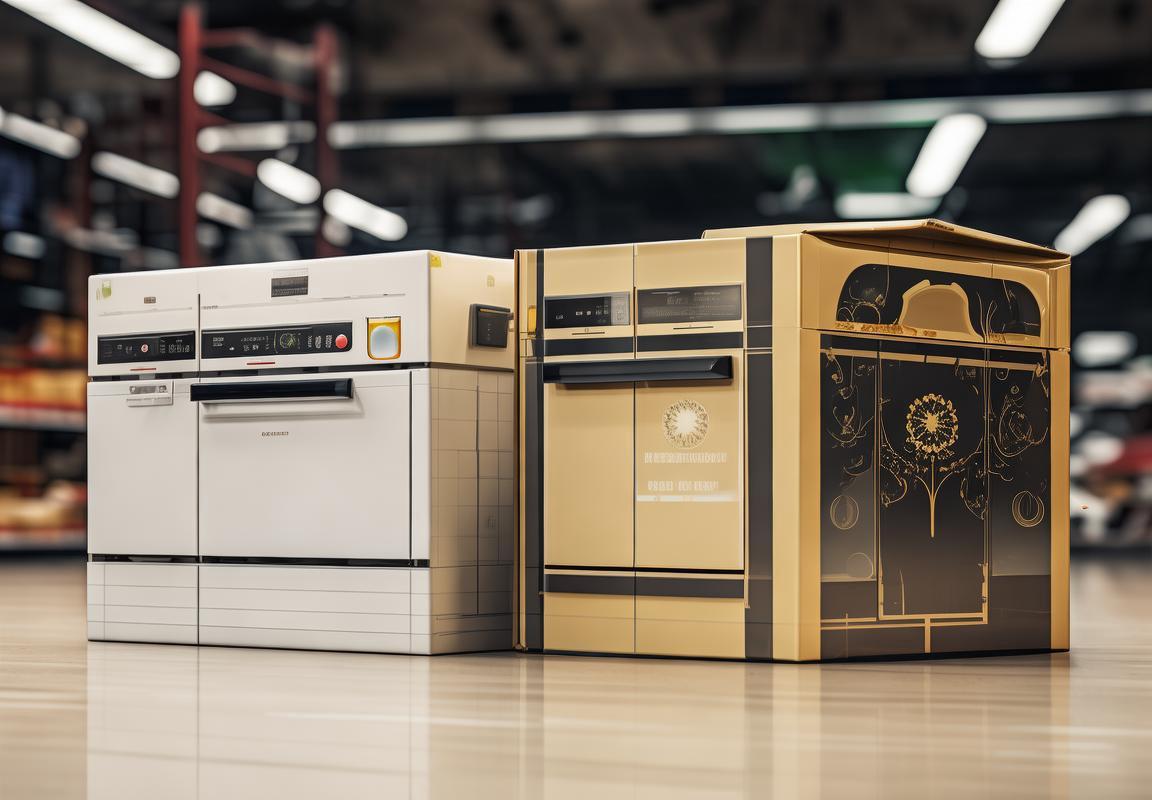
The Future of Private Label Kitchen Appliance Packaging
In today’s fast-paced and environmentally conscious market, the future of private label kitchen appliance packaging is shaping up to be a blend of innovation, sustainability, and consumer expectations. As we look ahead, several trends are poised to redefine how private label products are packaged and perceived by consumers.
The integration of technology is one such trend that is expected to revolutionize packaging. Smart packaging, which incorporates digital features like QR codes and augmented reality, allows for a more interactive and informative shopping experience. Imagine scanning a package to learn about the appliance’s features, sustainability certifications, or even customer reviews. This not only enhances the customer’s understanding of the product but also adds a layer of personalization that can set private label brands apart.
Sustainability remains a cornerstone in the future of packaging. With growing concerns about the environmental impact of packaging materials, private label brands are increasingly turning to eco-friendly alternatives. Biodegradable plastics, recycled paper, and compostable materials are becoming more common, reducing the carbon footprint and appealing to environmentally conscious consumers. The shift towards sustainable packaging is not just a trend; it’s a commitment to the planet and to the brand’s values.
Customization is another area where we can expect to see significant advancements. Packaging that adapts to the consumer’s preferences or usage patterns is becoming more feasible with advancements in digital printing and material science. Imagine a kitchen appliance package that changes color or texture based on the product inside, or one that provides a visual cue about the appliance’s energy efficiency. This level of personalization can make the product more memorable and engaging.
Branding plays a crucial role in the future of private label packaging. As private label brands continue to compete with established names, they must invest in strong branding to create a distinct identity. Packaging design will likely become a key component of this branding strategy, with innovative and visually appealing designs that communicate the brand’s values and quality. The packaging itself will become a silent salesperson, conveying the brand’s story and differentiating it from competitors.
The rise of subscription services is also influencing packaging design. As more consumers opt for subscription-based models for their kitchen appliances, packaging will need to be durable yet disposable, as it may need to withstand shipping and multiple uses. Additionally, packaging for subscription services will need to be informative, detailing the features of the appliance and how to use it, which can help in building customer loyalty and repeat purchases.
The future of private label kitchen appliance packaging will also see a greater emphasis on transparency. With consumers demanding to know more about the products they buy, packaging will need to provide clear information about ingredients, manufacturing processes, and sustainability practices. This transparency not only builds trust but can also be a selling point for brands looking to position themselves as ethical and responsible.
Innovation in packaging materials is also on the horizon. We may see the development of materials that can self-destruct after use, leaving no trace behind. Materials like edible packaging or packaging that dissolves in water are examples of how packaging can evolve to be more sustainable and less wasteful.
Lastly, the future of private label packaging will be driven by consumer behavior. As preferences shift, so will the design and functionality of packaging. For instance, the rise of online shopping has led to an increased demand for packaging that is easy to recycle or dispose of responsibly. This means that packaging design will need to be versatile, catering to both in-store and online sales channels.
In conclusion, the future of private label kitchen appliance packaging is a dynamic landscape that will be shaped by technological advancements, environmental concerns, consumer expectations, and the evolving landscape of retail. As these factors intertwine, we can anticipate a packaging revolution that not only enhances the shopping experience but also aligns with the values of a sustainable and informed consumer base.